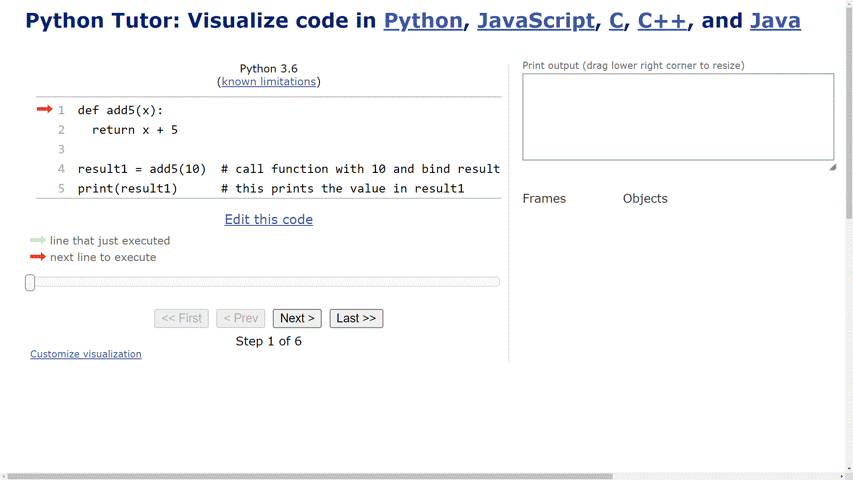Function Basics
As we mentioned in the overview a function consists of three parts:
- The input(s) to the function
- The function itself
- The output from the function
You can think of a function as a machine (black box) that takes some input(s), does something, and then produces an output.
Once you define a function, you can reuse it. This is the principal reason for their existence. Don't Repeat Yourself! (DRY)
In essence it is a way of packaging up bits of code for reuse or to make your program more readable.
1. Defining a Function in Python
We define a function using the keyword def, a function name, and the function parameters. We then write the code the function performs in the function body.
def function_name(<formal parameters>):
<function body>
The easiest way to demonstrate a function is by an example.
Our first function will just add 5 to the input
def add_five(x):
return x + 5
Note that the return keyword is how you return (output) something from a function. Here the function add_five() returns the result of adding 5 to the input x.
2. Calling a Function in Python
add_five() is now a function that you can call with different values of x. e.g. add_five(10)
Try running the following code,
def add_five(x):
return x + 5
result = add_five(10) # call function with 10 and bind result
print(result) # this prints the value of result
and you will get
15
as the output.

You can visualise this yourself on Python Tutor.
Note that we could have called this function twice.
def add_five(x):
return x + 5
result_one = add_five(10) # call function with 10 and bind result
result_two = add_five(7) # call function with 7 and bind result
print(result_one) # this prints the value in result_one
print(result_two) # this prints the value in result_two
and you will get
15
12
as the output.
2.1 Define a Function Before You Call It
Now try the following,
result = add_five(10)
print(result)
def add_five(x):
return x + 5
and you will get NameError. This is because the function has not yet been defined, i.e. it is below the function call. Python does not know about that name.
2.2 Order of Precedence
We can also do more interesting things like:
def add_five(x):
return x + 5
result = add_five(10)*add_five(7) # same as 15*12
print(result) # prints 180
Here Python will evaluate add_five(10) and then evaluate add_five(7), then multiply them together.
This is because other than parentheses (), function calls have higher precedence than everything else in Python.
2.3 Multiple Return Statements
Consider the following function.
def greater_than_five(x):
if x > 5:
return True
else:
return False
if __name__ = "__main__":
print(greater_than_five(3)) # prints False
print(greater_than_five(7)) # prints True
Here we use an if statement to test whether x is greater than 5, if it is the function returns True, otherwise it returns False.
This is a key point, although your function can only return one output, it can have more than one return statement in your function.
Note that we could have done this with one return statement by returning the result of the boolean expression.
def greater_than_five(x):
return x > 5
if __name__ = "__main__":
print(greater_than_five(3)) # prints False
print(greater_than_five(7)) # prints True
Again which one you use will be your preference and which one you are more comfortable with. Both ways are fine. If the second one isn't for you, then use the first one.
3. if __name__ = "__main__":
You will have noticed in the last couple examples used the if __name__ = "__main__": block. This is not needed to call your functions, but as stated in the 5.1 - MP: Passing Unit Tests you should write any code and calls to your functions inside this block.
The reason is that the unit tests import your code and anything outside the if __name__ = "__main__": will get run due to the import. This can mess up the unit tests!
=== TASK ===
Create a function that tests whether a number is odd or even.
Copy the following into a new Python file.
def odd_test(x):
# delete pass and replace with code to implement the function
pass
if __name__ == "__main__":
print(odd_test(3)) # should output True
print(odd_test(8)) # should output False
Your function odd_test and take in one input.
It should return a True or False depending on the number.
For example:
odd_test(3) should return True and odd_test(8) should return False.